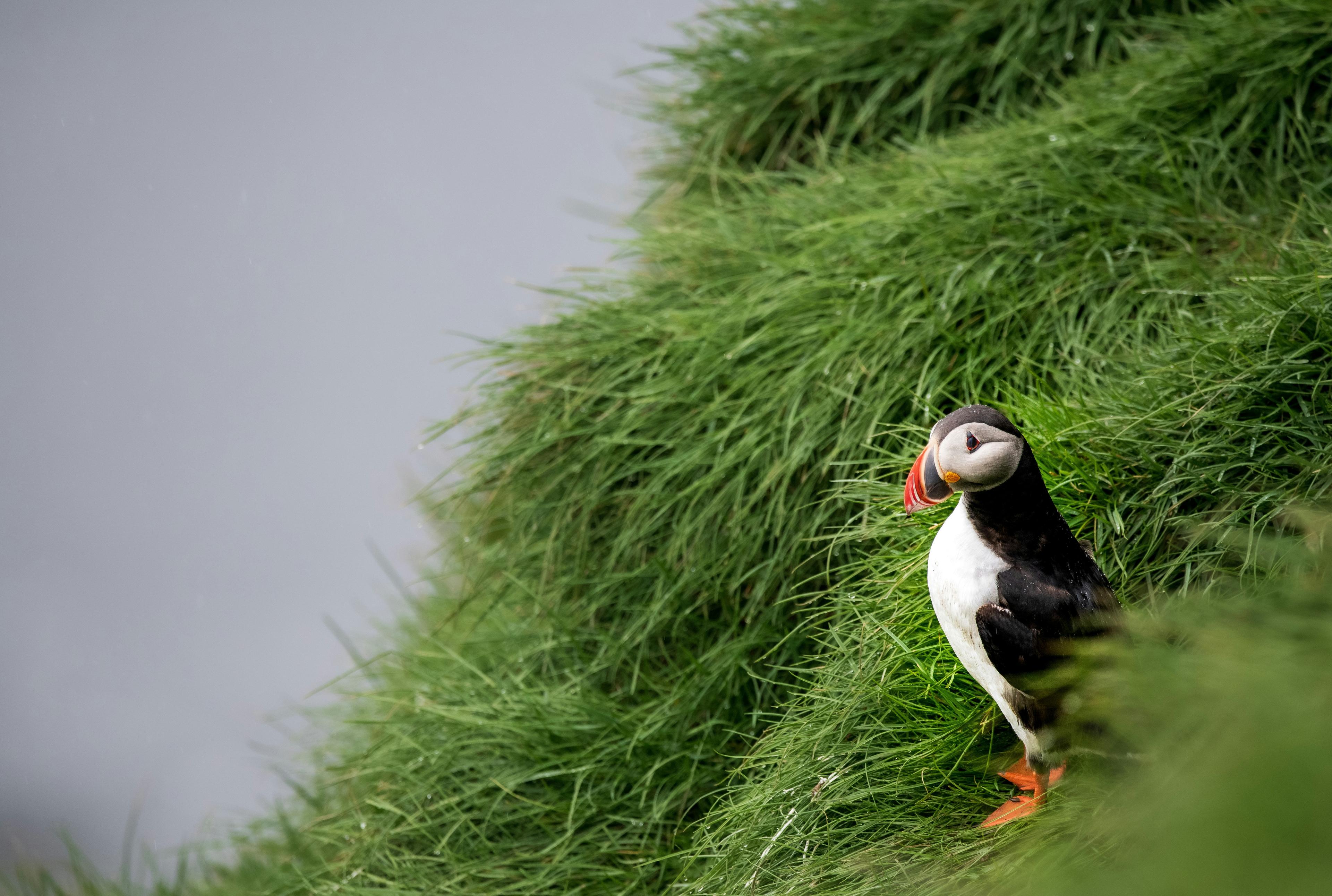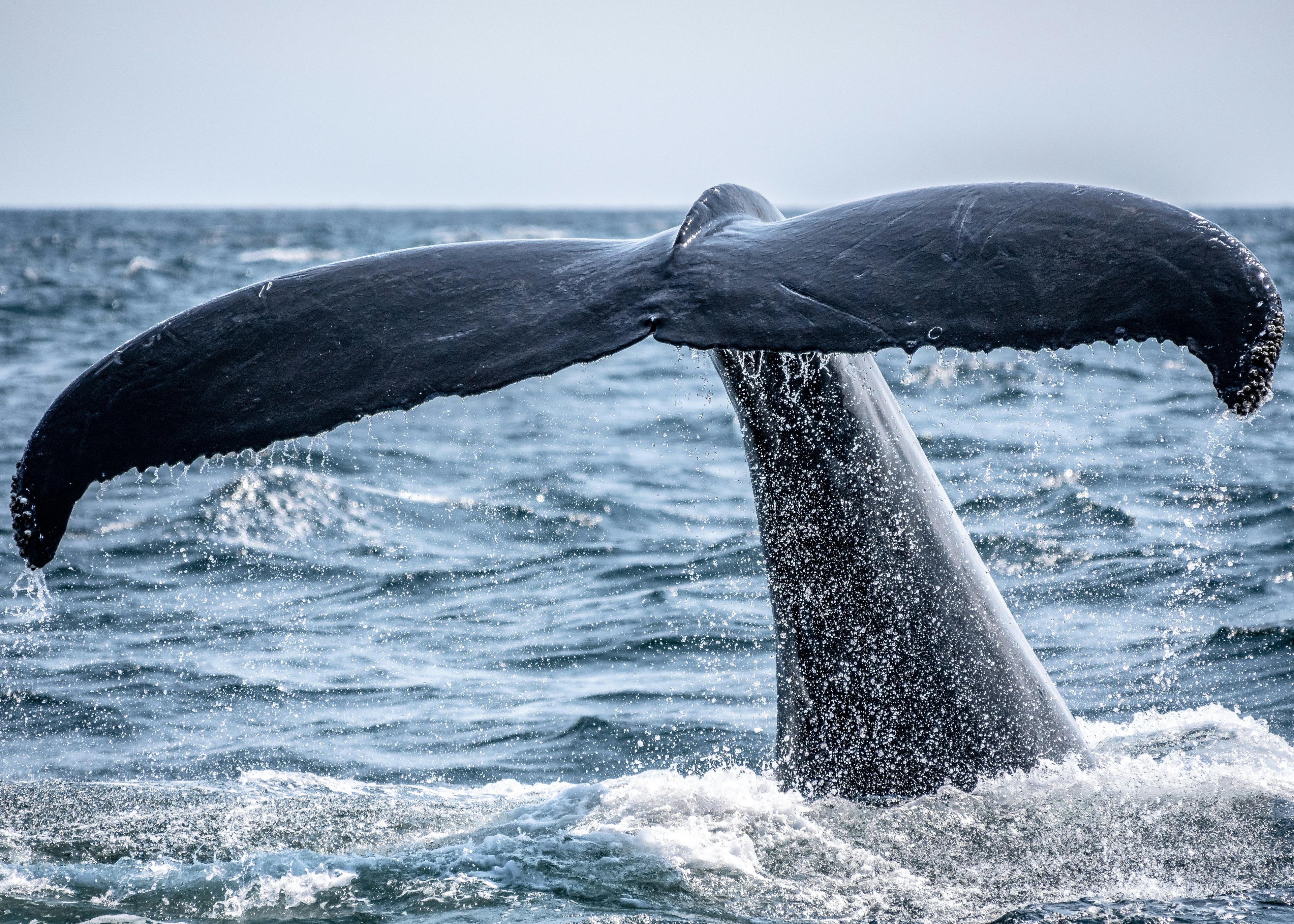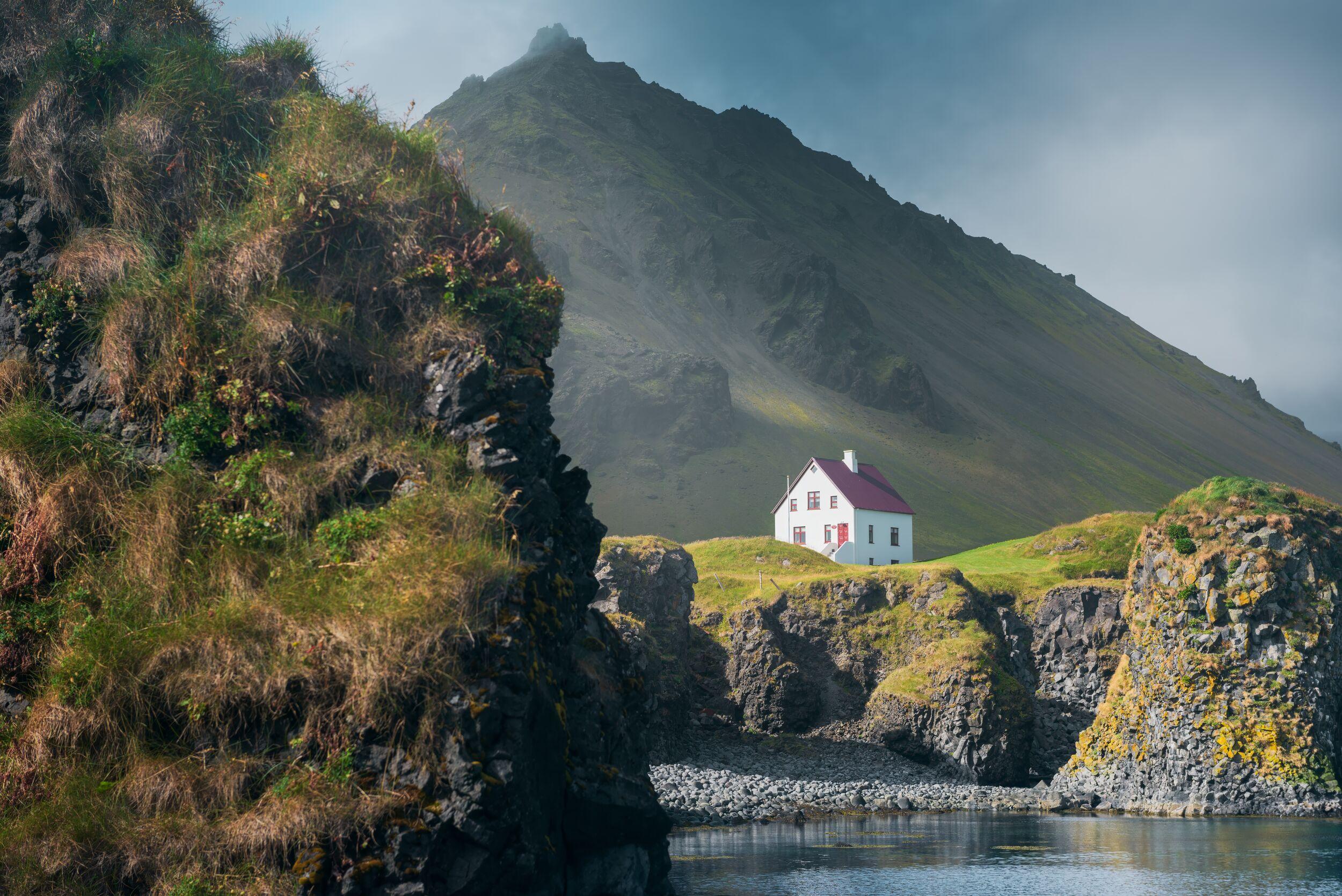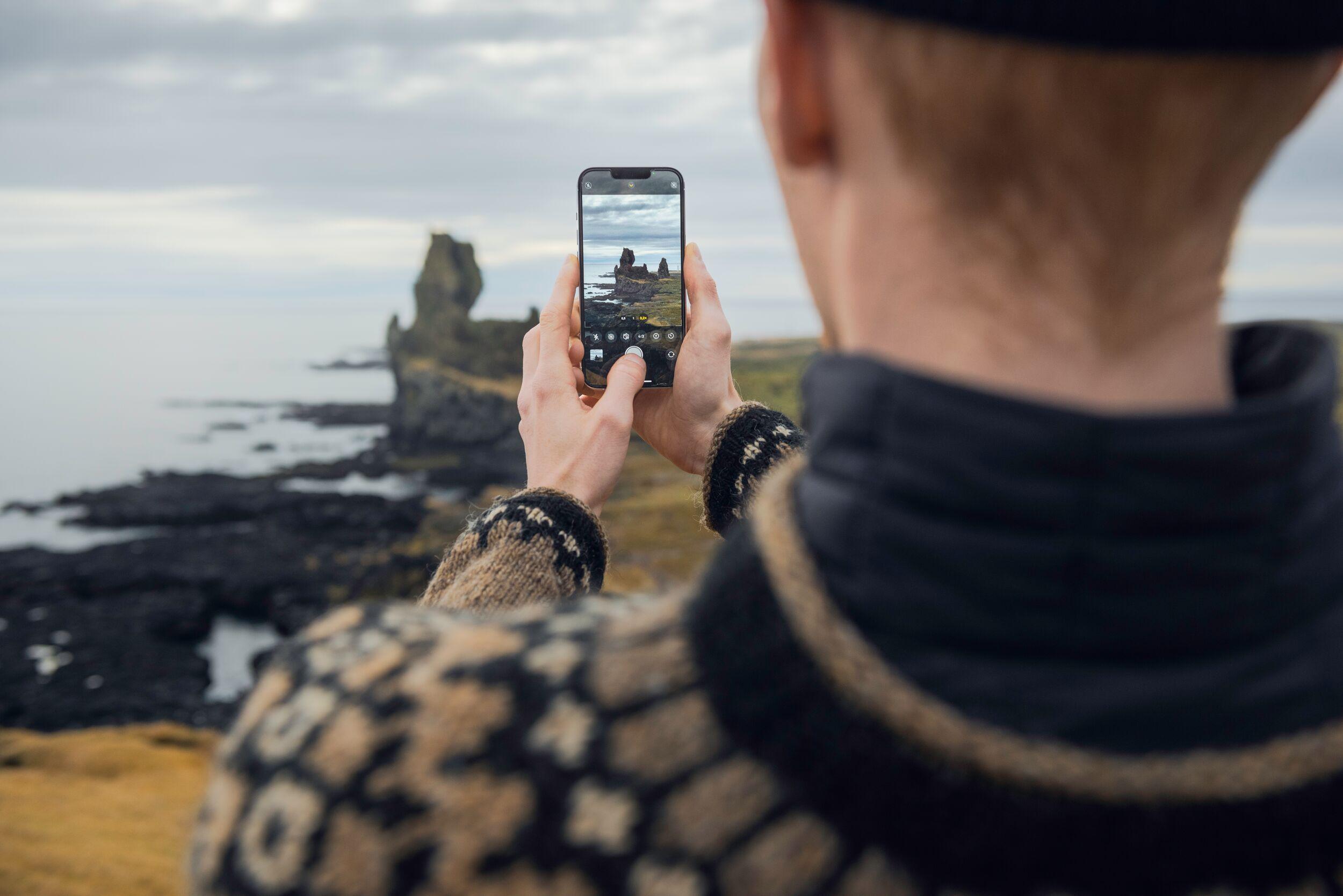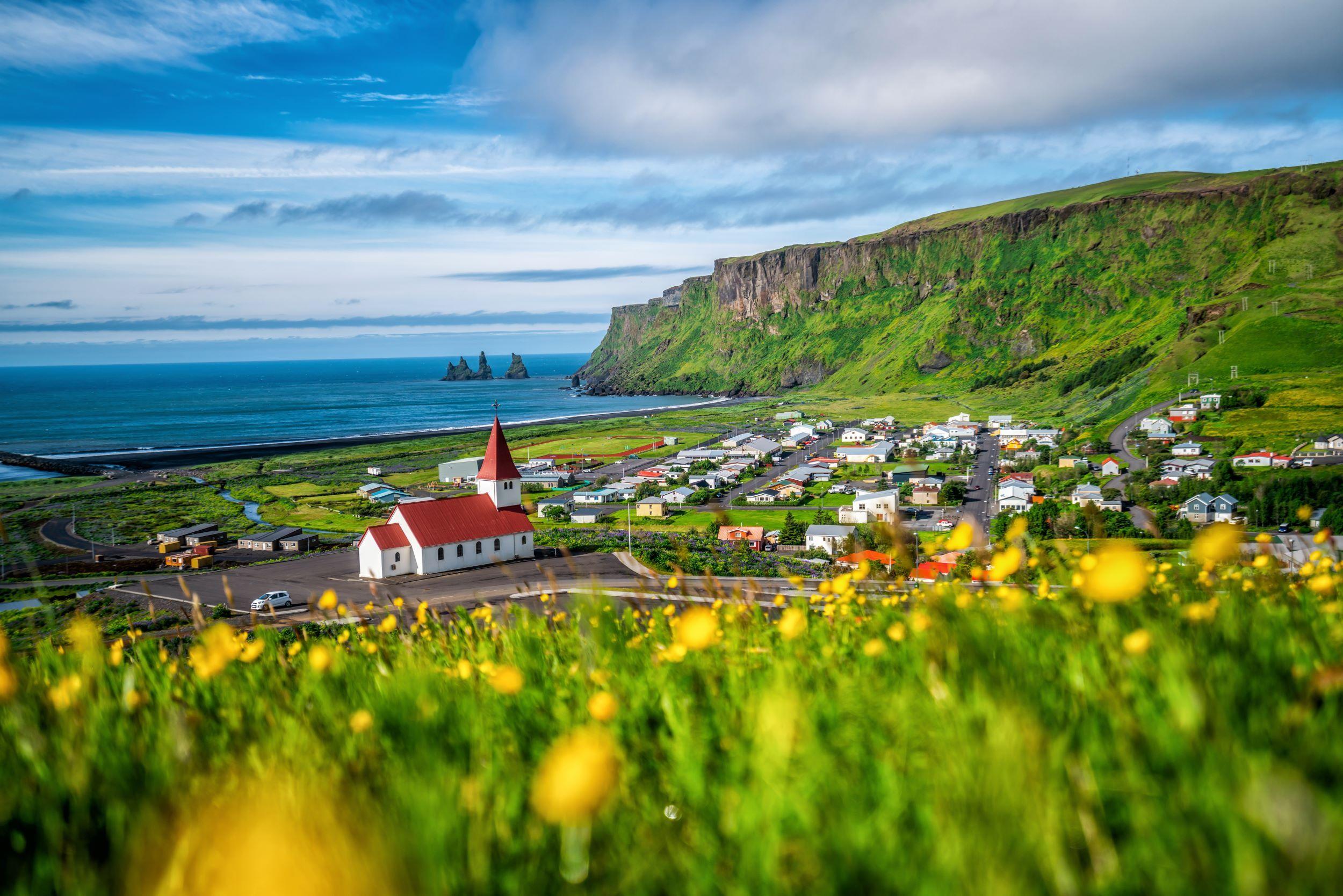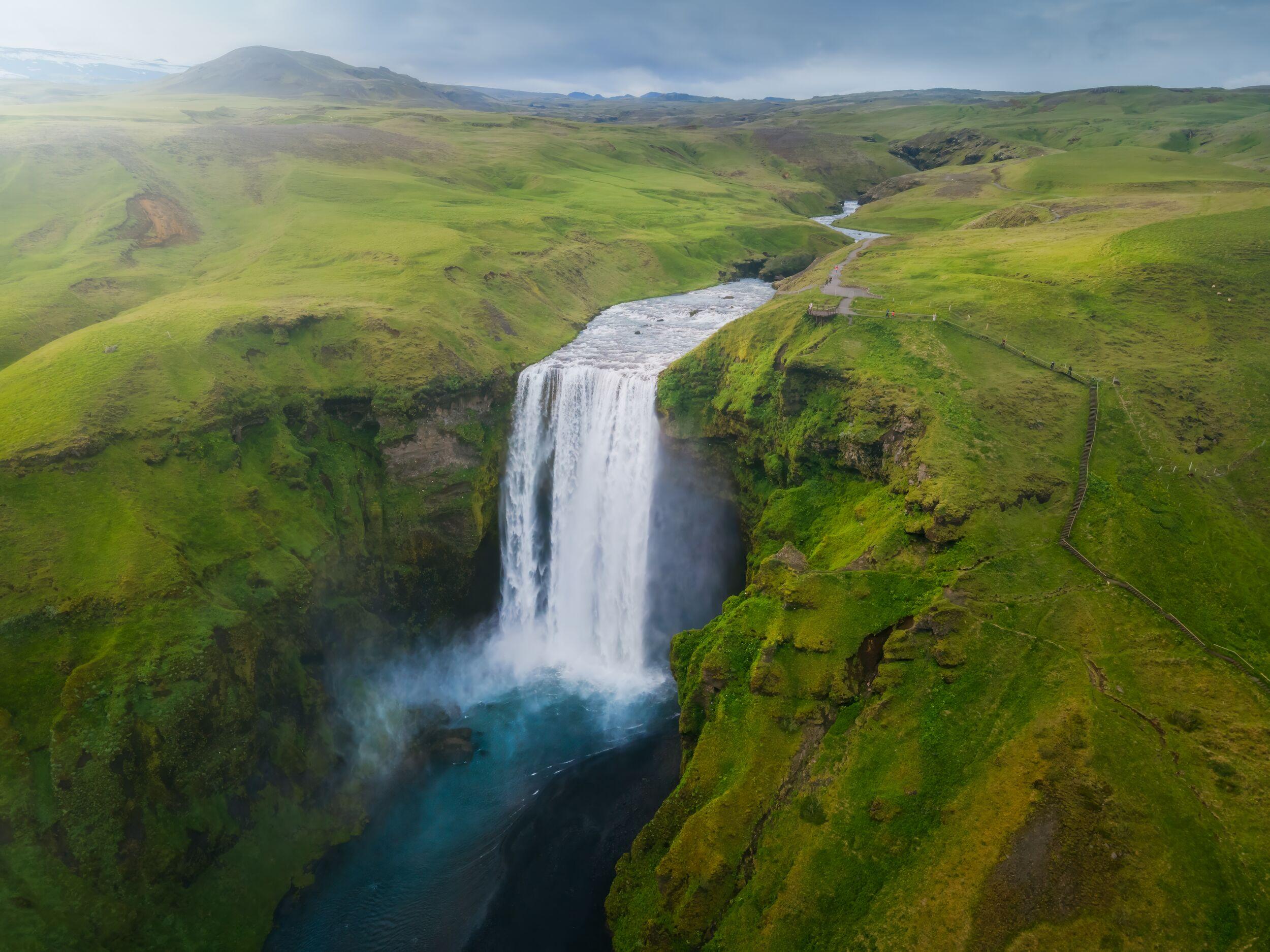Where To See Puffins in Iceland: Your Comprehensive Guide
Table of Contents
- 1Why Iceland is one of the best places in the world to see puffins
- 2Puffin behaviour, diet and breeding habits
- 3Where to see puffins in Iceland: Close to Reykjavik
- 4Where to see puffins in South Iceland
- 5Where to see puffins in East Iceland
- 6Where to see puffins in North Iceland
- 7Where to see puffins in the Westfjords
- 8When is the best time to see puffins in Iceland?
- 9Practical tips for wildlife enthusiasts
- 10Questions and Answers about Puffins in Iceland
Why Iceland is one of the best places in the world to see puffins
Birds in Iceland are plentiful, as the country’s isolated location and harsh climate support only a few land mammals. With vast seabird colonies, wetlands filled with waterfowl, and rugged highlands home to raptors, Iceland is truly a birdwatcher’s paradise.
Iceland is home to approximately 60% of the world’s Atlantic puffin population. Surrounded by water in the chilly reaches of the mid-Atlantic, conditions here are ideal. So if you have your heart set on a puffin encounter, then making it happen in Iceland is a definite possibility, so long as you know where to find them and when they’ll be around.
The number of puffins is assessed using a count based on what’s known as “apparently occupied burrows”. According to the Guinness Book of Records, Vestmannaeyjar (the Westman Islands) off Iceland’s south coast seasonally hosts the largest colony. Recent estimates put the figure at 830,000 breeding pairs – representing one in five of all Atlantic puffins on the planet.
Puffin behaviour, diet and breeding habits
Puffins are part of the auk family. With a typical lifespan of 20-25 years, they are creatures of habit. They live out at sea for much of the year, returning to the same place each summer to nest in cliffside burrows dug by the male where they can feel safe from predators. From around the age of three, with the same mate, the female usually lays a single egg. A fluffy chick, known as a puffling, hatches after about 40 days.
It remains in the nest for six weeks or so while its attentive parents bring it herring, capelin, sand eels, sprats and other small fish multiple times during the day. They’re easy to spot in the air, beating their wings incredibly fast – up to 400 times a minute – as they shuttle back and forth with food.
When in the water, their wings propel them efficiently through the water while their feet act as a rudder. Puffins are accomplished divers, and though they don’t stay under the surface for long, perhaps 30 seconds at a time, they can reach depths of 60 metres or more.
Iceland's waters are home to 23 species of whales, showcasing the incredible diversity of marine life in this pristine environment.
Where to see puffins in Iceland: Close to Reykjavik
Puffins are found in various locations across Iceland, so it’s usually pretty easy to slot a few hours of bird watching into your itinerary alongside an Icelandia tour or two.
Akurey
You won’t see puffins onshore in Reykjavik, but hop on a boat trip through Faxaflói Bay and see them on one of the nearby islands without stepping ashore. Not to be confused with the similarly named Akureyri, this small island lies off the northern shore close to Reykjavik. Puffins are the most common type of bird found on Akurey, but you can also glimpse lesser black-backed gulls, eider ducks and black guillemots here.
Lundey
Lunda means puffin in Icelandic, and this uninhabited island in Faxaflói Bay is well-named. Migratory sea birds such as puffins make their home here, as do fulmars, arctic terns and guillemots. Book a whale watching tour departing during the summer months from Reykjavik’s Old Harbour and there’s a good chance of seeing such birds too as you pass one of these islands.
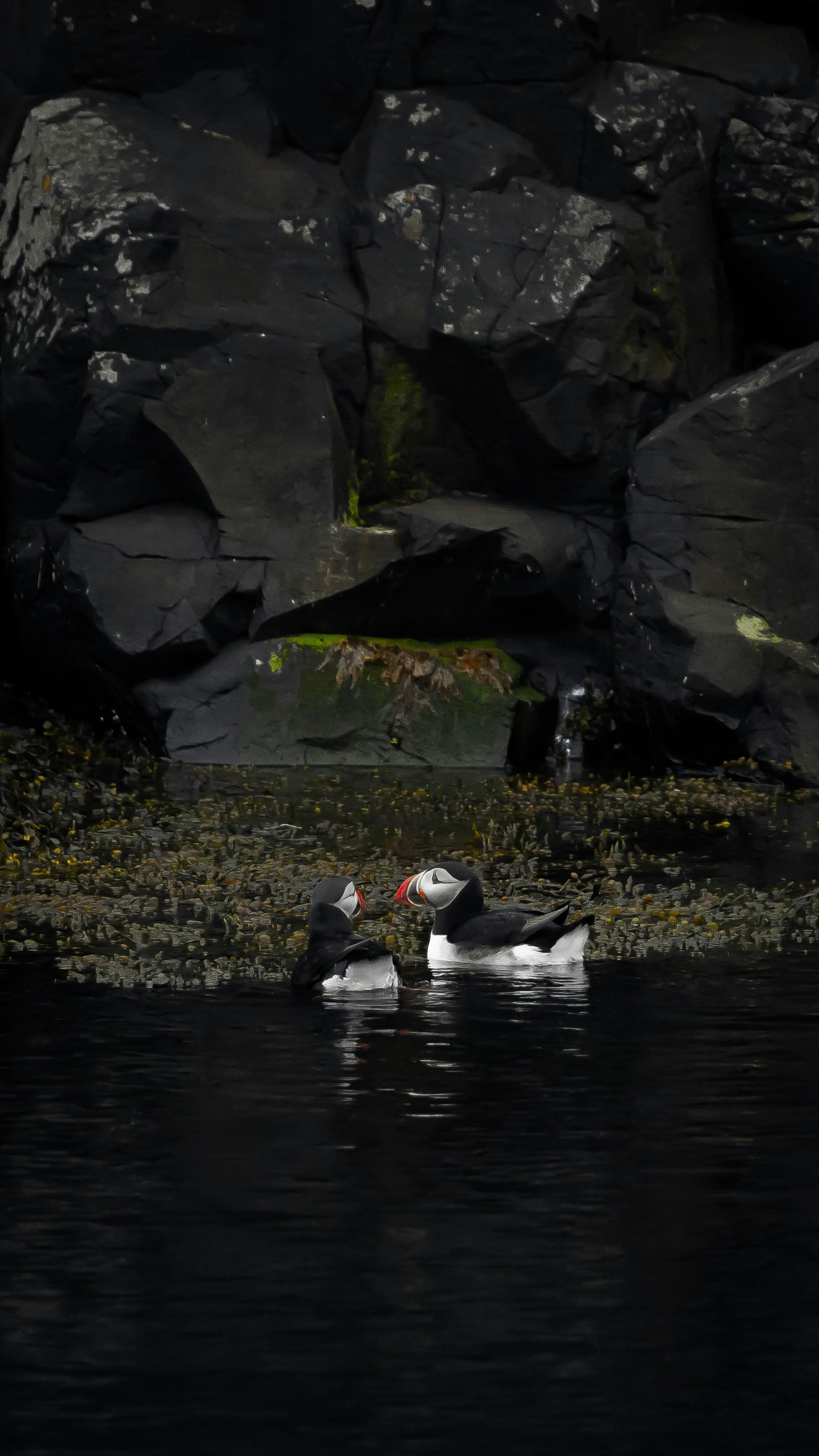
Boat tours are available throughout the summer from Reykjavík, often combined with whale watching tours.
Where to see puffins in South Iceland
Vestmannaeyjar (Westman Islands)
A few miles from the dock at Heimaey you’ll find a spacious bird hide. Peer out of its windows and you can see numerous puffins in their cliffside burrows and watch them coming and going. For a short time each August, islanders assist confused young puffins on their journey back to the ocean in what’s dubbed the Puffling Parade.
Ingólfshöfði
This southerly headland comprises a private nature reserve to which tours are available in season. To reach it, visitors must travel across tidal mudflats pulled by a tractor. From the beach, climb a steep black sand dune to the grassy cliff top to observe puffins, great skuas, kittiwakes and guillemots. The views back to the mainland are impressive on a fine day.
Dyrhólaey
This south coast promontory is another prime spot for puffin sightings as well as other birds such as fulmars, terns and skuas. As a managed nature reserve, the area is off-limits overnight, but during the day its viewing areas are accessed via marked trails where you have a good chance of an encounter. Due to its proximity to tourist-friendly Vik and Reynisfjara Beach, it’s a popular spot with puffin watchers.
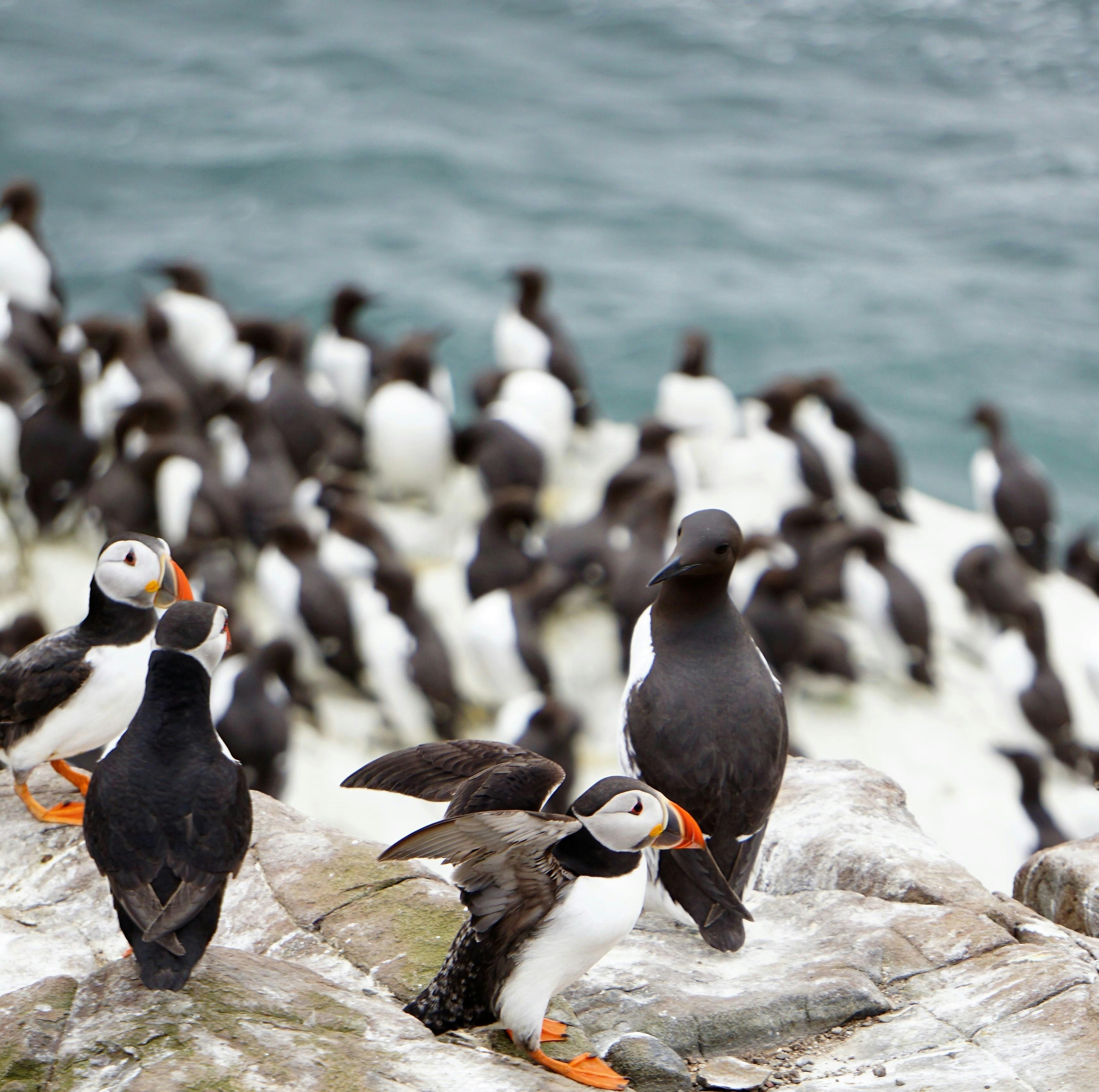
The Westman Islands host the world's largest Atlantic puffin colony, with millions of birds nesting there each summer.
Where to see puffins in East Iceland
Borgarfjörður Eystri
Ringroaders, consider a detour to the village of Borgarfjörður Eystri in East Iceland, which dubs itself the “Puffin Capital of Iceland”. Approximately 10,000 breeding pairs are regular visitors here during the season and the islet of Hafnarhólmi is the best place to observe puffins. Above the marina, there are shelters and wooden platforms from which you can safely view this accessible colony from as little as two metres away. Watch the live stream here.
Papey Island
Tours used to run from Djúpivogur in the East Fjords but to reach tiny Papey Island now you’ll need a private boat. No one has lived here since 1948 and even at its peak in the 18th century there were only 16 residents. But that isolation is probably the reason there’s a thriving puffin colony here – even if it is largely inaccessible.
Puffins can dive up to 60 meters or 200 feet in search of fish.
Where to see puffins in North Iceland
Tjörnes Peninsula
The cliffs that line the fjords of the Tjörnes Peninsula are an ideal place to scout for puffins. Situated within easy reach of Húsavík, this area boasts a number of bird watching spots, such as Hringsbjarg, where there’s a family-friendly viewing platform, and Voladalstorfa, where you’ll need to hike out to an orange lighthouse that’s as brightly coloured as a puffin’s feet.
Grímsey Island
Located within the Arctic Circle, Grimsey is easy to reach from Akureyri. It’s a peaceful place, boasting only around 70 human inhabitants but a much greater population of birds, including puffins, kittiwakes, razorbills and guillemots. Stay overnight to make the most of the Midnight Sun.
Where to see puffins in the Westfjords
Látrabjarg
Europe’s largest sea bird cliff is situated in the Westfjords at Iceland’s westernmost point. Here you’ll usually find puffins in their burrows between late April and July. It’s one of the country’s larger puffin colonies and the birds are not fazed by the proximity of humans, making this a popular spot with visitors to this region despite the long journey to reach it and the steep, rocky landscape.
Vigur Island
Travellers staying in Ísafjörður could consider a visit to Vigur Island, the home of a local family and their neighbours – a colony of around 100,000 puffins. Book a boat trip in summer to get you over to the island. Visitors are also welcome to tour the historic Viktoríuhús, which dates from 1860. Also, watch the eiderdown harvest as it’s being processed.
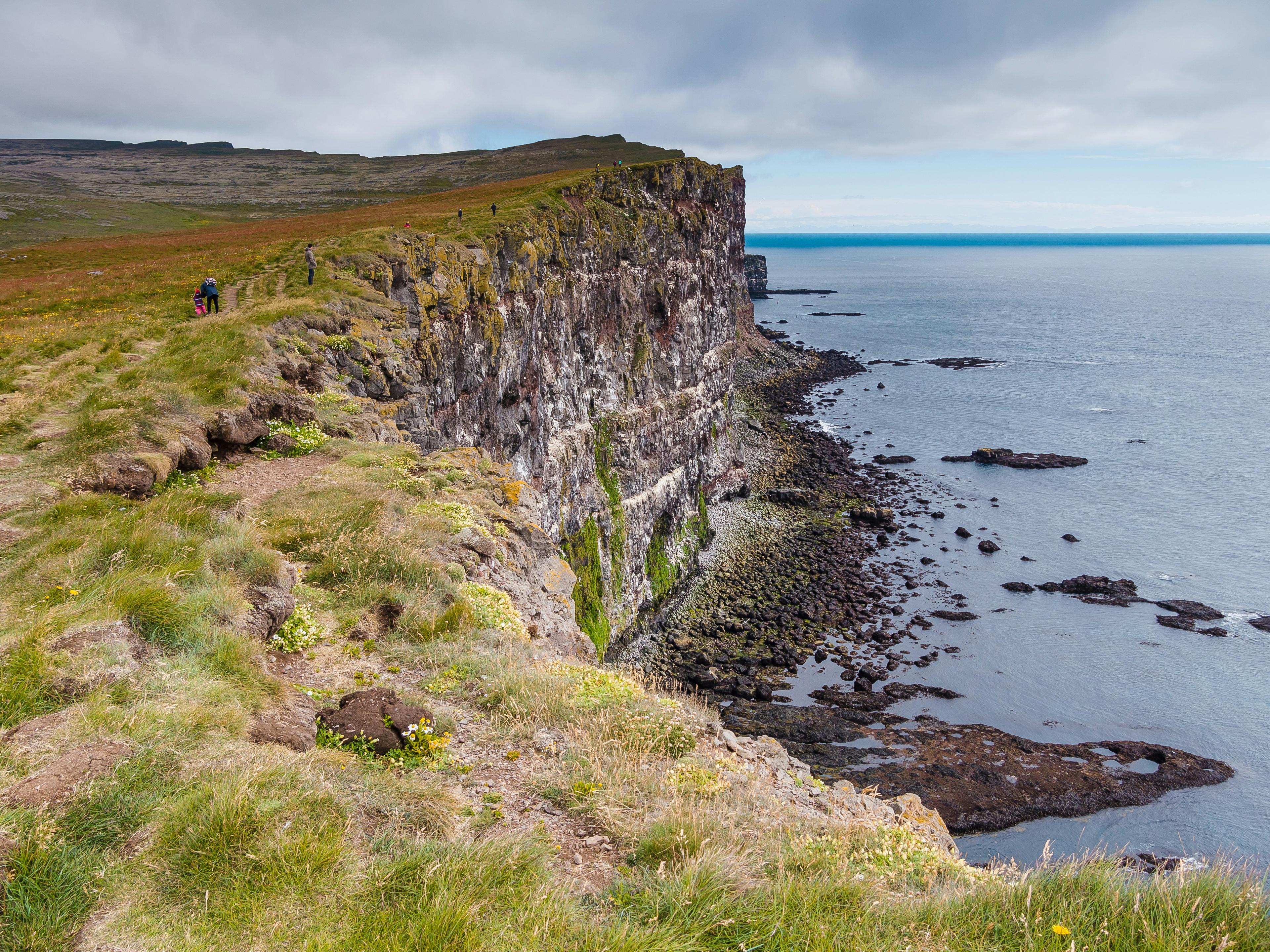
Látrabjarg is one of the largest bird cliffs in Europe and a prime location for observing puffins up close.
When is the best time to see puffins in Iceland?
Puffins aren’t found on land year-round, so if you hope to see these comical birds, then you’ll need to time your visit carefully for puffin season in Iceland. The best time of year to see puffins is during late spring and summer.
From late April or early May, the birds return from the ocean to nest and rear their young. They still spend a fair amount of time out at sea, so time your visit for early morning or later in the evening to improve the likelihood of a sighting.
Typically puffins depart from Icelandic shores in mid-August, sometimes earlier, with most birds leaving at more or less at the same time. Within a few days, there are none left, though you might catch sight of the stragglers on a boat trip into September. Of course, as with wildlife in general, the exact dates vary according to weather and other factors.
The best time to see puffins in Iceland is from late April to early August, when they come ashore to breed.
Practical tips for wildlife enthusiasts
It’s important that you observe birds responsibly and without disturbing their natural habitat. Do act respectfully at all times and make sure that your actions don’t interfere with puffins’ natural behaviours. Don’t ever attempt to feed wild birds such as puffins or do anything to entice them closer to you.
Dress warmly – even though it’s summer, the coastline of Iceland can be windy and the air chilly. Make sure you pack a long lens and a sturdy tripod if you’re serious about photography. Videos will capture the comedy in puffins’ clumsy take offs and landings. Binoculars are also handy for observing plumage, behaviour and movement.
Should you eat puffin in a restaurant?
As we’ve already seen, large numbers of puffins can be found in Iceland during the summer months. However, the puffin population is still considered vulnerable.
Numbers are in decline, partly through an increase in sea temperatures and the resultant decrease in food. Hunting puffins to eat has therefore become a controversial subject and as a consequence, visitors may prefer not to choose the bird off a restaurant menu.
Puffin numbers are in decline, partly due to rising sea temperatures and the resultant decrease in their food supply.
Questions and Answers about Puffins in Iceland
Puffin season occurs between May and July, although they begin to arrive around mid-April and the last ones leave around mid-August. During this time, puffins return to shore to breed and raise their young. They nest in clifftop colonies, making it an ideal period for birdwatching tours. Visiting Iceland in the summer gives you the best chance of encountering these charming birds.
You can see puffins near Reykjavik on two small, uninhabited islands a few minutes by boat from the city. These islands, Lundey and Akurey, host large puffin colonies during the breeding season. Puffin-watching tours operate multiple times a day during summer with a 100% sighting guarantee, making it convenient for visitors to witness these birds without traveling far from the capital.
While puffin is traditionally eaten in some parts of Iceland, it is becoming less common due to conservation efforts and changing attitudes towards wildlife protection. Eating puffin is legal, but many locals and conservationists discourage it to protect the population and ensure their long-term survival.
The Látrabjarg Cliffs, and the Westman Islands are among the best places to photograph puffins due to their large colonies and stunning natural backdrops. Látrabjarg offers dramatic cliffside views with thousands of puffins nesting, while the Westman Islands provide opportunities to capture the birds in their largest Icelandic colony. Both locations allow for close observation and excellent photo opportunities.
Puffins are most active in the early morning and late afternoon when they return from feeding at sea. During these times, you can observe them coming and going from their nests, interacting with each other, and performing their charming behaviors. This makes these times ideal for birdwatching and photography.
You can see puffins for free at natural sites like Dyrhólaey, Borgarfjörður Eystri, and the Látrabjarg Cliffs. Dyrhólaey, located near Vík, offers easy access to puffin nesting sites on its cliffs. Borgarfjörður Eystri provides wooden platforms for safe and close observation, and Látrabjarg is renowned for its extensive puffin colonies and breathtaking views.
When puffins leave Iceland, they spend the winter months out at sea in the North Atlantic Ocean. They are highly adapted to life at sea, swimming and diving for fish. They remain in the open ocean until the breeding season approaches again in spring, at which point they return to their nesting sites on land.
No, there are no penguins in Iceland. Penguins are native to the Southern Hemisphere, primarily found in Antarctica and surrounding regions. Puffins, on the other hand, are native to the Northern Hemisphere and are commonly found in Iceland during the breeding season.
Yes, you can see puffins without a tour at accessible locations such as Dyrhólaey and Borgarfjörður Eystri. These sites have well-marked paths and observation areas where you can watch puffins in their natural habitat. However, guided tours can enhance the experience by providing expert insights and ensuring you visit the best spots for sightings.
une and July are the best months to see puffins, as they are most active during the breeding season. During these months, puffins are busy feeding their chicks and can be seen in large numbers at their nesting sites. The extended daylight hours of the Icelandic summer also provide ample opportunities for observation.
Related Articles
See all articlesRecommended tours
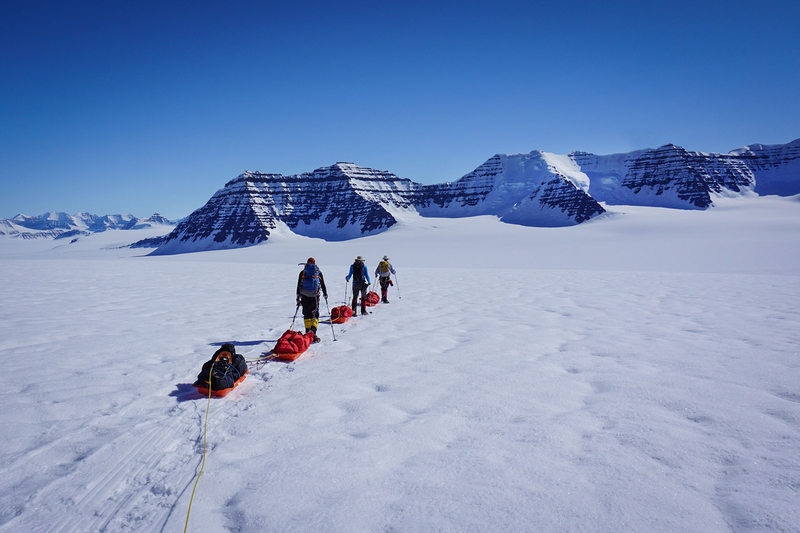
Mt Gunnbjörn, the Highest Peak in Greenland
Are you dreaming of an Arctic adventure of a lifetime? This 5-day tour has you scaling the highest peak of the Arctic (3694 m/12120 ft). Mt. Gunnbjörn has been called the 8th continental peak due to its massive size, and it beckons climbers from around the world. On the east coast, where towering mountains rise from the Greenland icecap, the conditions are pristine and similar to those in Antarctica. There’s nothing quite like challenging yourself to climb in one of the most isolated areas of the north, with the fresh Arctic air and stark white snow. An experienced and qualified guide will lead the group, keeping participants safe and informed. This is not a trek for a beginner as the hike is considered strenuous, and participants should have mountain climbing experience and be prepared to camp for four nights. Mt. Gunnbjörn is easily accessible on a ski plane from Iceland. Once in the Watkins Mountains, we set up a comfortable base camp at the foot of the mountain. To make the summit day more manageable, we establish one camp on the way to the summit. The climb can be done on snowshoes, with the last part done on crampons.
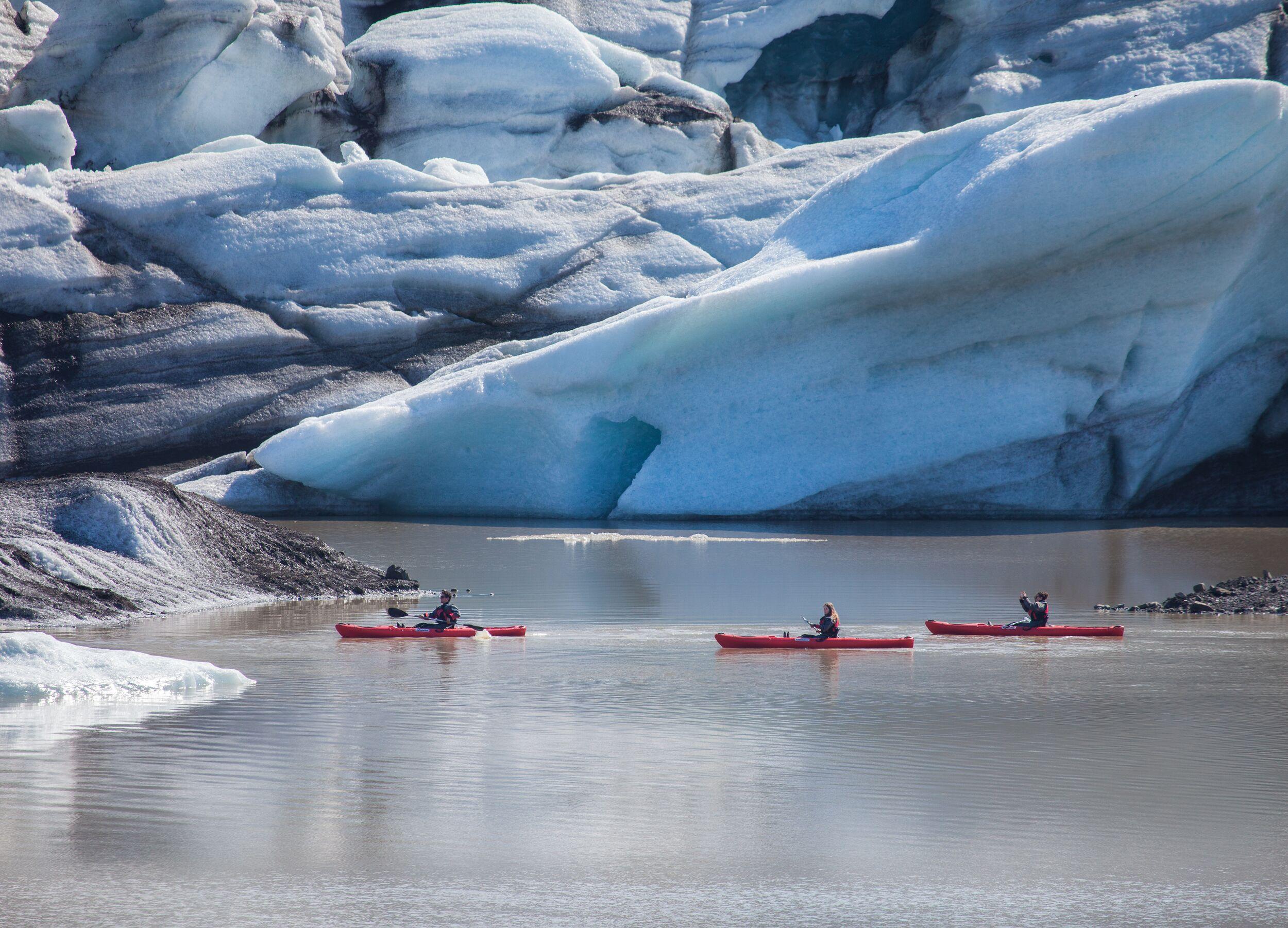
Kayaking by the Glacier
With its enormous white and blue icebergs breaking off from Sólheimajökull Glacier, join this leisurely kayak tour where you will sail along the Sólheimajökull Glacier Lagoon. This is an experience you absolutely cannot miss out on. Bask in the beautiful nature surrounding you as your expert guide leads you around this gorgeous outlet glacier.
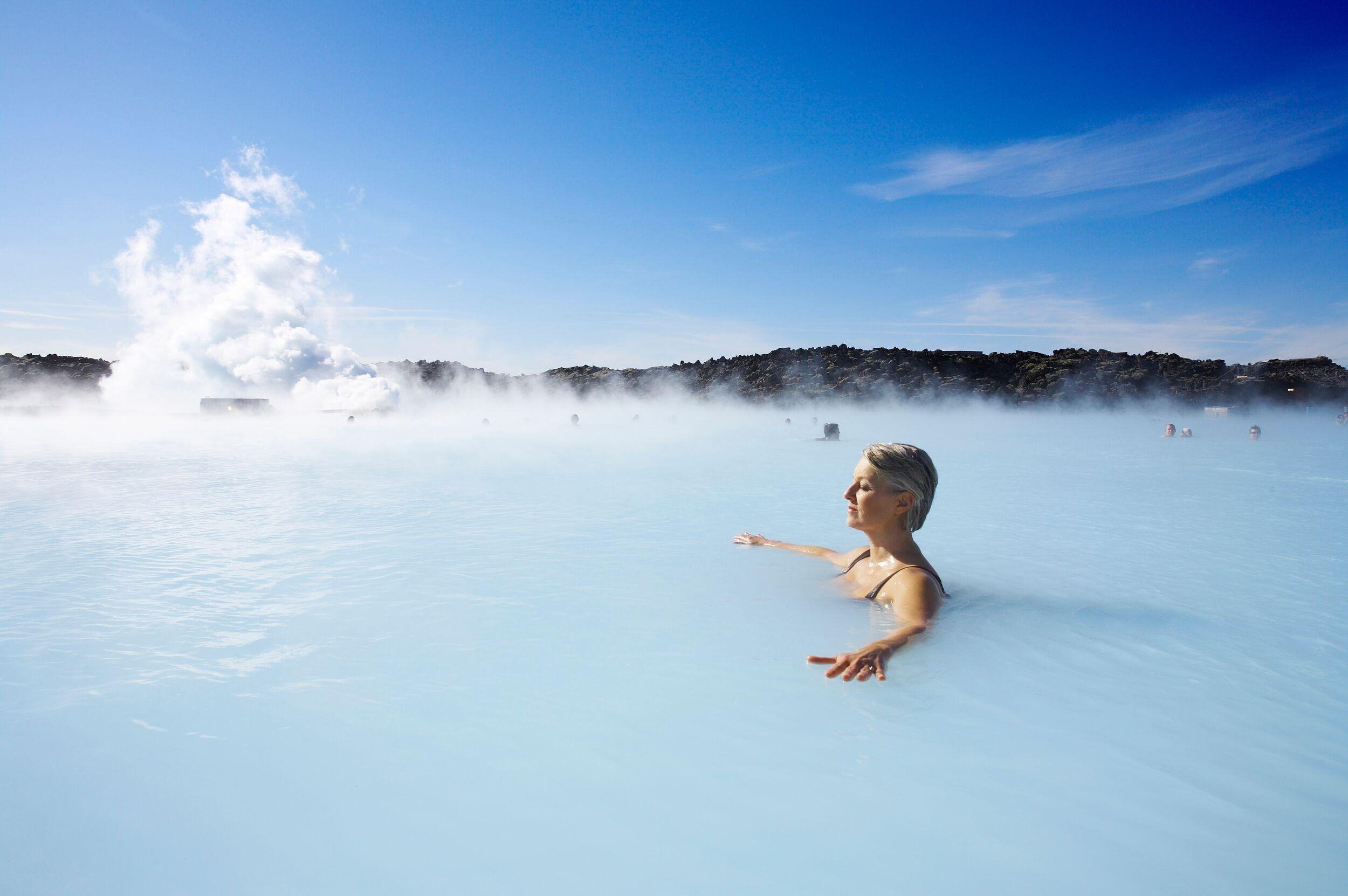
- Best seller
- Popular
Blue Lagoon & Northern Lights
Enjoy a perfect winter day in Iceland! Experience the best of Iceland with this package of two of the island’s most popular tours in one day! Soak in the milky blue healing water of the Blue Lagoon, which is one of Iceland's most famous tourist attractions and is considered by many to be a once-in-a-lifetime experience and an unmissable part of a visit to Iceland. After your return to Reykjavík, a guide will lead you on a search for the elusive northern lights! Watching the lights dance and flicker in the sky, changing shape and colour, is incredible. Prepare to be dazzled!
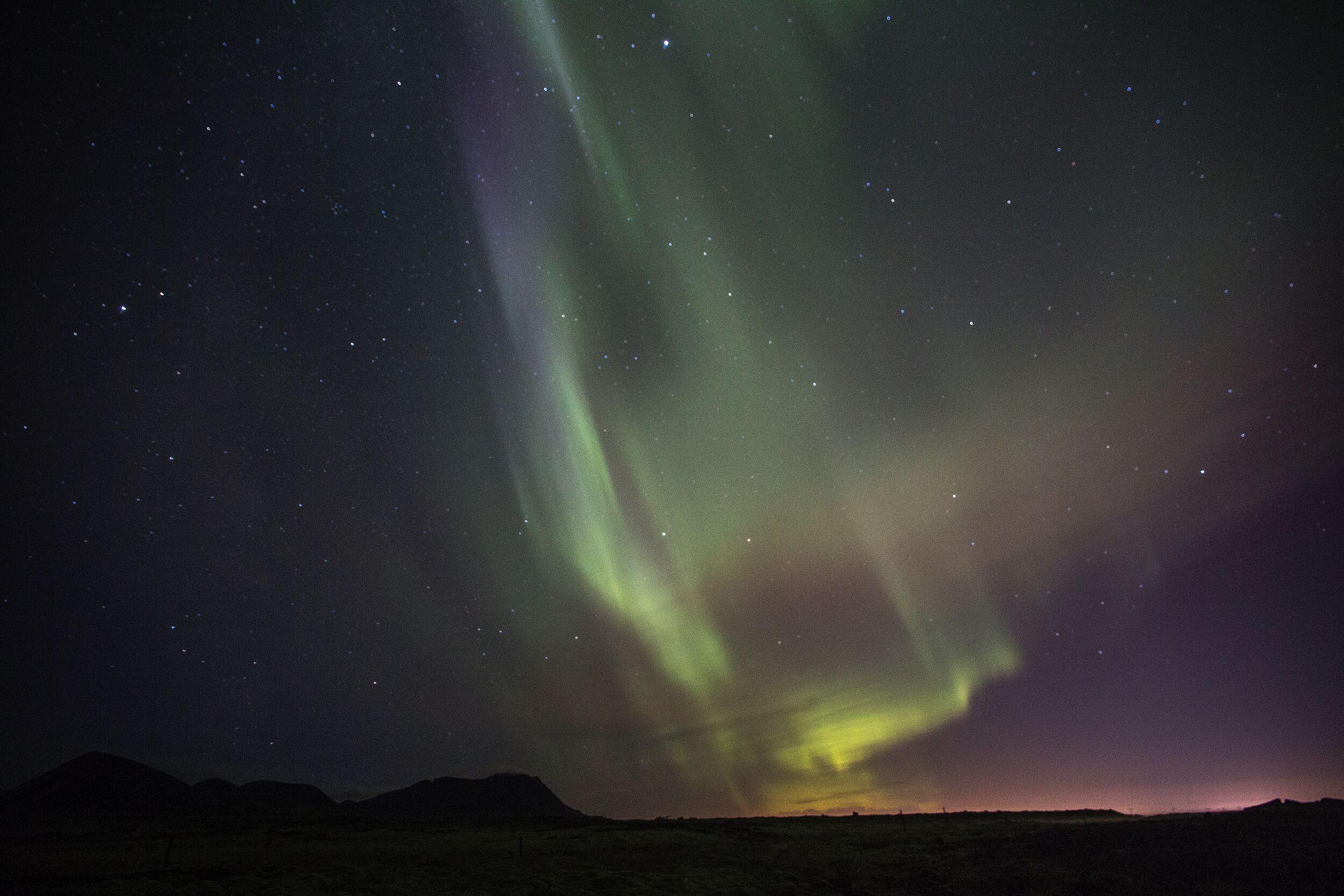
The Golden Circle & Northern Lights - Combo Deal
Want to see the sites of the Golden Circle and hunt for the northern lights but have a limited amount of time? Consider this express Golden Circle/Northern Lights tour! Experience the landmarks of the classic Golden Circle in South Iceland on this unforgettable day tour. The Golden Circle encompasses the must-see sights of Thingvellir National Park, the golden Gullfoss waterfall, and the bubbling geothermal region of Geysir. After your return to Reykjavík, a guide will lead you on a search for the elusive northern lights!

Iceland On a Budget - 7 days
Explore Iceland’s breathtaking landscapes, geothermal hot springs, and volcanic wonders on this 7-day (6 nights) Iceland on a Budget package. See the geysers and waterfalls of the Golden Circle, marvel at the black sand beaches of the South Coast, and discover Reykjavík’s cultural landmarks with a Hop-On Hop-Off city pass. Relax in the serene geothermal pools of Hvammsvík and step inside a real lava tunnel, where you’ll walk through Iceland’s volcanic history. With affordable travel, carbon-neutral transfers, and expert local guides, this package provides a budget-friendly way to experience Iceland’s best sights.
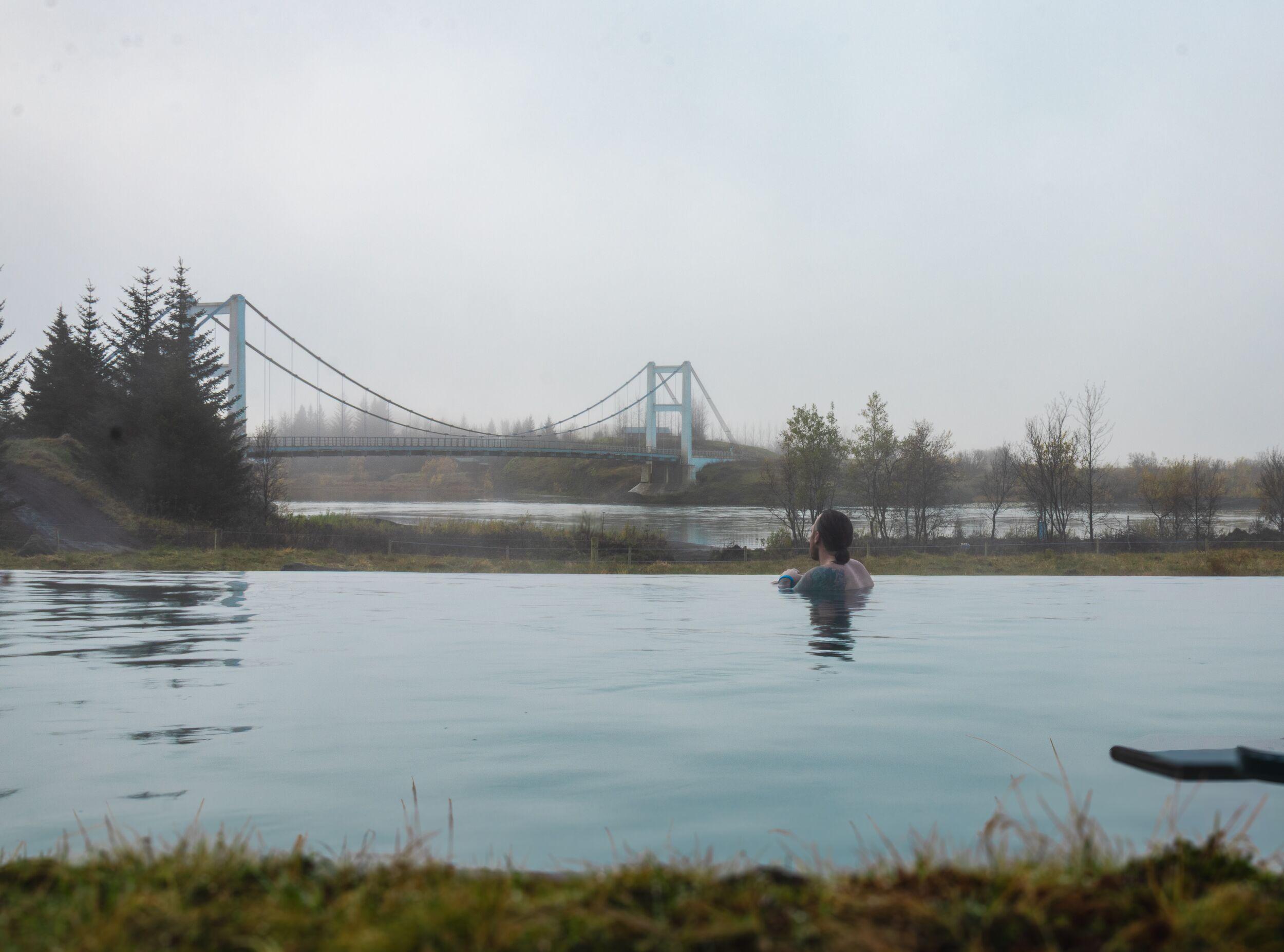
Golden Circle and Laugarás Lagoon Birki Admission
Begin your adventure with a relaxing soak in the geothermal waters of Laugarás Lagoon, a tranquil new spa in the heart of Iceland’s countryside. Then set off on a journey through the iconic Golden Circle, where you'll discover three of the country’s most breathtaking natural wonders: Gullfoss waterfall, the erupting hot springs of Geysir, and the historic rift valley of Þingvellir National Park.


